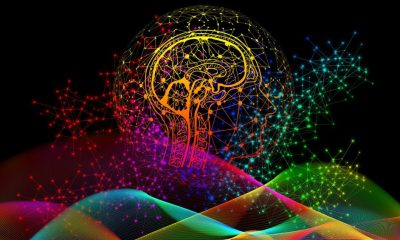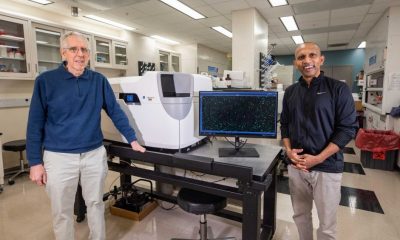Artificial Intelligence
AI-Controlled 3D Rat Could Lead To New Neuroscience Insights

Researchers from Harvard University and DeepMind have recently created a virtual, biologically accurate 3D model of a rat that can be controlled by artificial neural networks. The researchers hope that studying how an artificial neural network controls a simulated rat through a 3D environment could give neuroscientists clues as to how real brains control organisms.
As IEEE Spectrum recently reported, a new paper that will be presented this week at the International Conference on Learning Representations details the creation of a simulated, 3D environment. A 3D model of a rat exists within this environment, and the computer-generated lab-rat will be controlled by AI models. The goal of the new study is to see if the neural networks that control the rat might have analogous functions found in biological brains.
The building blocks of deep neural networks are neurons, or nodes that transform data with mathematical functions. These neurons are joined together in layers in a way that resembles the synaptic connections of the brain. While there are many notable differences between artificial neural networks and real brains, a number of neuroscientists and researchers believe that the parallels that exist between the two could provide useful insights into how brains operate, potentially improving both AI and neuroscience.
The 3D computer-generated environment created by the researchers is to act as a controlled, experimental platform for AI researchers. Researchers will be able to use the environment to experiment with how various neural networks deal with challenges and how they approach (or don’t approach) biological networks. As postdoctoral researcher and co-author of the study Jesse Marshall explained, quoted by IEEE Spectrum, while the average neuroscience experiment analyzes the brains of animals as they perform one task (or just a few tasks), and most robots are designed for just a few tasks, a more robust explanation of how flexible brains operate and arise is needed. According to Marshall, the paper “is the start of our effort to understand how flexibility arises and is implemented in the brain, and use the insights we gain to design artificial agents with similar capabilities.”
The computer engineered rat is biologically accurate, with all the joints and muscles one would find in a real rat. The rat also has simulated senses like proprioception (a sense of one’s body parts in space) and vision. The neural network that controls the rat’s movements was trained on four different tasks: tapping on a ball with precise timing, navigating a maze, jumping over gaps, and navigating a hilly, steep region.
When the virtual rat completed the tasks, the research team analyzed recordings of the network’s activity utilizing techniques based on those utilized in the field of neuroscience. The researchers analyzed the network’s activity to determine how the network had manifested the motor control scheme necessary to carry out the assigned tasks.
The researchers found that the neural network reused certain representations for the different tasks, applying common patterns to different scenarios. The neural activity was often represented as discrete sequences, which is something that has been witnessed in real rodents and in birds. One unexpected finding was that natural activity in an AI model seemed to be present over a longer period of time than was expected should the AI model simply be controlling the movement of limbs and muscles. This could suggest that the AI network manifests behaviors and motion at an abstract level for things like jumping and running. This mirrors cognitive models that have been proposed for real-life animals.
Though artificial neural networks may lack the physiological embodiment and realism of real neural networks, neuroscientists such as Blake Richards from McGill University in Canada argue, as IEEE Spectrum reported, that the models share many important features of neural processing with genuine neural networks, and they are useful in making predictions about how neural activity might influence behavior. Therefore, the recent paper’s achievement was designing a method of experimenting with neural networks and training them in a more realistic environment, enabling a better comparison to experiments involving biological data.
Stephen Scott, a neuroscientist from Queen’s University in Canada, also believes that the framework designed in the new paper could be a useful method of examining the neural underpinnings of behavior. The virtual rat is capable of carrying out a variety of multistage, complex behaviors that can be precisely correlated with neural activity. This is an advantage over how most experiments with animal models are done on just simple tasks, due to how complex the recording of neural activity are.
However, Scott also acknowledges that the process of harvesting neural data from animals performing complicated tasks can be extremely difficult. Therefore, Scott hopes to see the paper’s authors compare the neural activity of the virtual rat, as it carries out easy tasks, to the activity found in real-world laboratory experiments, in order to better understand how the virtual models and real-world brain patterns differ.














